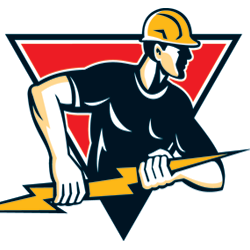|
exhibiting 101
 Top Mistakes My Clients Make
Avoid these common exhibit-marketing gaffes that can impact your program's effectiveness and your bottom line. By Betsy Earle
As a trade show and event consultant, I work with clients from a diverse range of industries, and the size and scope of their exhibiting programs vary just as widely. But regardless of my clients' budgets, target markets, and exhibiting strategies, I frequently see them make the same missteps – often unknowingly – that result in stress-inducing delays, costly fees, and additional work for themselves and their suppliers. Although difficult to witness, these blunders and unwise decisions are understandable and, in a way, forgivable, as it's easy for exhibit managers to get caught up in the details and forget to look at the big picture. That's why I've compiled the following list of eight common mistakes that I see clients make to help keep you from committing the same exhibit-marketing errors.
1. Communicating their company names via their booth designs but not making it clear what it is they do and why the attendees should care. A lot of exhibitors forget that not everyone knows who they are and the products, services, and solutions they provide. As such, they invest heavily in graphics and signage that scream their brand names and corporate colors but convey little else. That's all well and good for increasing basic brand recognition, but it gives showgoers who are new to the industry or are first-time attendees little reason to venture into your exhibit. After all, how are they to know what you offer and how you can address their needs? There are numerous ways to give roving attendees an immediate understanding of what your company does and lure prospects to your exhibit. ➤ Opt for graphics that show cus-tomers using your products and/or benefiting from your services. A large-format image of your widget in action communicates far more information than a logo-adorned backdrop.➤ Craft a short but impactful tagline to accompany your graphics. The most effective taglines are traditionally benefit-focused (e.g., "Simplify your e-commerce endeavors"), straightforward, and reinforce your firm's key differentiators. Vague or overly clever slogans won't drive booth traffic. ➤ Aisle-side product demonstrations and displays catch the eye, increase engagement, and educate passing attendees at a glance. Also, consider getting input from laypeople outside of your company. For example, before signing off on a new exhibit, show the renderings to a handful of friends and ask them what they think the booth is showcasing based solely on its design. Their feedback may surprise you – and send you back to the drawing board. 2. Neglecting to properly highlight new products or services. An aggregate of research shows that most attendees go to trade shows to see what's new in their industries, yet time and again I see exhibitors fall short when it comes to drawing attention to wares making their show-floor debuts. I'm not saying exhibitors need to slap tacky, starburst-shaped "New!" stickers on their novel products. Properly showcasing a recently launched widget can be as easy as positioning a prominent display at the front of the exhibit, incorporating some eye-catching yet on-brand signage, and instructing staffers to reference the display during their icebreaking conversations with attendees. Even a simple "Ask me what's new" button on staffers' shirts can elicit showgoers' curiosity. Since about 90 percent of attendees preplan which exhibits they'll visit on the show floor, according to the Center for Exhibition Industry Research (CEIR), it's also wise to get your new product on attendees' radar before the exhibit hall opens. On top of encouraging recipients and viewers to visit your booth and schedule appointments with reps, your pre-show email blasts, direct mailers, and ads in the show directory or website should feature your cutting-edge contraption or got-to-have-it service. 3. Making last-minute design changes. It's practically inevitable that a client will want to make what he or she thinks is – and may very well be – a small change to an exhibit's design, but that tiny tweak can have a cascade effect that impacts a dizzying number of elements. For example, let's say one week before a show a client decides to add a freestanding coffee station to the exhibit. Sounds easy enough. But this "simple" request may lead to alterations to the computer-aided design (CAD) document, updates to the electrical order, a flurry of emails to the official caterer, etc. In other words, this client's costs can skyrocket. To avoid these 11th-hour headaches, work with your internal team to come up with a comprehensive list of your exhibiting objectives, needs, and wants, and share these priorities with your exhibit-house rep as early in the design process as possible. When you receive a design draft, take the time to review it carefully and respond with all of your desired changes in a single document as opposed to sending a series of emails asking for piecemeal revisions. This will make it much easier for your designer to institute your amendments in one fell swoop, which, depending on how you're being billed, could reduce your expenses significantly.
Are you looking for an opportunity to squander up to 30 percent of your budget? Then I recommend ignoring the discount deadlines for show services.
4. Displaying too many products.A cluttered exhibit can look like a garage sale and will likely overwhelm or even exasperate attendees. I like to compare "shopping" an exhibit to visiting a retail store. If I'm going to a big-box discounter such as T.J. Maxx, I know I need to devote time to digging through the racks to find what I'm looking for. But if I'm on a show floor, I have a fixed amount of hours and energy to locate what I need. Most attendees are in the same boat and will be turned off by a cluttered exhibit. I understand the mindset that it's best to maximize your show-floor presence by spotlighting every product and service in your company's portfolio, but take a step back and reevaluate your exhibiting objectives, as well as the needs of each show's average attendee. Then work with your internal stakeholders to identify which specific products and services are applicable to both concerns. These edited offerings should be the primary focus of your exhibit, and information on the rest of your company's goods can be made accessible via touchscreen kiosks or emailed literature. 5. Choosing exhibit components that are heavy or difficult to assemble. To sidestep the cost of renting an exhibit property, one of my clients shipped several brand-new, never-been-assembled Ikea bookcases to a show. What this client didn't take into consideration, however, were the hours of union labor required to screw together the hundreds of pieces of these ad-hoc exhibit walls. Ultimately, the setup and drayage fees eclipsed any potential savings this endeavor was trying to realize. My advice is to opt for lightweight fabric elements whenever possible. And if you do go the DIY route, find components that are easy to build on the show floor or can be assembled in advance and shipped to the venue. 6. Missing discount deadlines. Are you looking for an opportunity to squander up to 30 percent of your exhibit-marketing budget? If so, then I recommend ignoring the deadlines for early bird discounts on show services such as furnishings, rigging, and electrical. Or if you'd prefer to allocate your exhibiting dollars more wisely, add the discount deadlines to your calendar and set automatic reminders a few days prior to give you time to complete your service orders. If you aren't 100 percent set on your order by the deadline, submit what you do know you'll need. You can always amend the order later, and this way you'll at least get the bulk of your services at a discounted price. 7. Sending too many small packages. Most general service contractors (GSCs) charge a small-package fee for boxes weighing less than 30 to 40 pounds. Depending on the GSC or venue, this fee could be in the ballpark of $50 per box. So if a situation arose in which you sent 10 small packages to the show site, you'd be looking at a $500 material-handling charge. On the other hand, if these shipments were consolidated into one box, your material-handling bill would likely be for 1 hundredweight (CWT) and closer to $100. That's an instant saving of $400! So consolidate your shipments whenever possible, and if you do have one or two last-minute packages, consider shipping them to your hotel and hand carrying them to the venue. 8. Failing to designate a project lead. There are frequently multiple internal stakeholders involved in my clients' trade show planning processes, principally key members of the marketing and sales teams. It shouldn't come as a shock that these two departments have very different priorities, goals, and opinions. I've been given a clear directive from my contact on a client's marketing team only to be told to go in an entirely different direction by my contact in the sales department. Should a similar situation arise with your exhibit-house rep, whom should he or she listen to? To avert these "too many cooks in the kitchen" scenarios, it's essential for your company to designate one specific person as its trade show lead. This individual should be the main point person funneling communications between the company and its external exhibiting partners. Interdepartmental debates and squabbles over trade show strategies and objectives are par for the course, but having a single project lead who will issue directives to an exhibit house will minimize confusion. No one is infallible – myself included. Thankfully many of the mistakes mentioned here can be avoided with some frank discussions, a bit of pre-show planning, and a dash of big-picture awareness. E  Betsy Earle, CTSM
Betsy Earle, CTSMmanaging director and founder of Event Driven Solutions LLC. Earle obtained her MBA at the University of Miami and earned her Diamond-level CTSM designation in 2018. Exhibiting101@exhibitormagazine.com
|
|
|
||||||||||||||||||||||||||||
|
|
||||||||||||||||||||||||||||
|
TOPICS Measurement & Budgeting Planning & Execution Marketing & Promotion Events & Venues Personal & Career Exhibits & Experiences International Exhibiting Resources for Rookies Research & Resources |
MAGAZINE Subscribe Today! Renew Subscription Update Address Digital Downloads Newsletters Advertise |
FIND-IT Exhibit & Display Producers Products & Services Supplier to Supplier All Companies Compare Get Listed |
EXHIBITORLIVE Sessions Certification Exhibit Hall Exhibit at the Show Registration |
ETRAK Sessions Certification F.A.Q. Registration |
EDUCATION WEEK Overview Sessions Hotel Registration |
CERTIFICATION The Program Steps to Certification Faculty and Staff Enroll in CTSM Submit Quiz Answers My CTSM |
AWARDS Sizzle Awards Exhibit Design Awards Portable/Modular Awards Corporate Event Awards Centers of Excellence |
NEWS Associations/Press Awards Company News International New Products People Shows & Events Venues & Destinations EXHIBITOR News |
||||||||||||||||||||
|
||||||||||||||||||||||||||||






